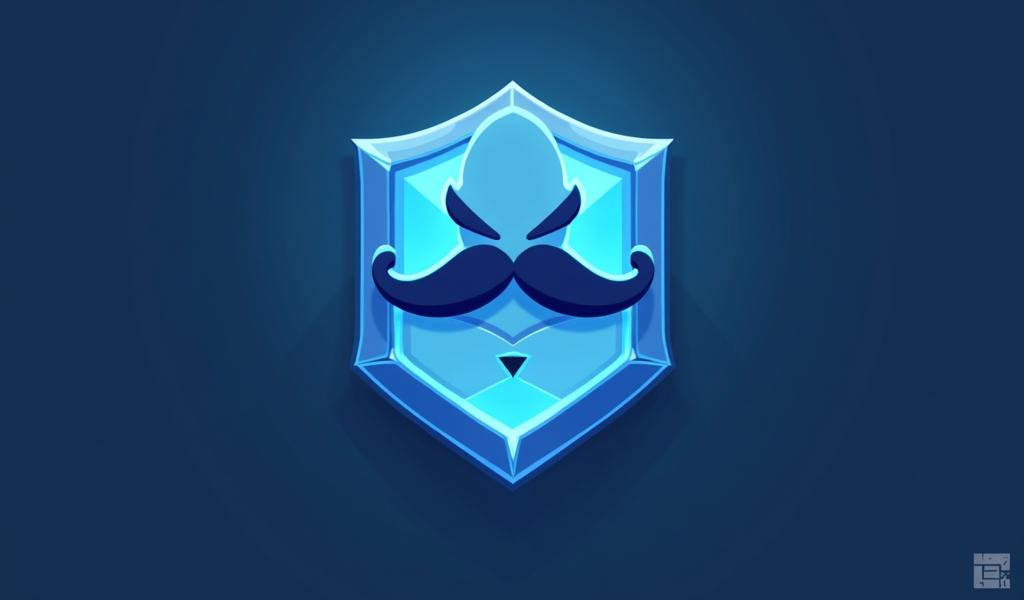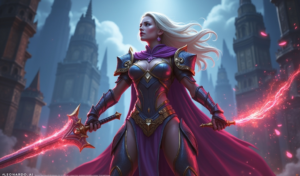Overview
How to play Braum effectively involves mastering his shield technique, positioning, passive stacking, protective itemization, and advanced macro play to transform into the ultimate tank support. As the Heart of the Freljord, Braum excels at absorbing damage, peeling for carries, and setting up game-changing plays with his crowd control abilities, making him an invaluable frontline defender for teams of all skill levels.
Table of Contents
- Introduction to Braum
- Understanding Braum’s Kit and Role
- Tip 1: Master Braum’s Shield Technique
- Tip 2: Perfect Your Passive Stacking
- Tip 3: Position Like a Pro
- Tip 4: Itemize for Team Protection
- Tip 5: Advance Your Macro Play
- Conclusion
- Frequently Asked Questions
Introduction to Braum
Learning how to play Braum effectively can transform your support game in League of Legends. The Heart of the Freljord stands as one of the most reliable tank supports in the game, offering unmatched protection for his team with his signature shield and crowd control abilities. Whether you’re just picking up Braum or looking to refine your skills with this mustached protector, this guide will walk you through everything you need to dominate the bot lane.
Braum excels at what he does best—being the frontline defender that every ADC dreams of having by their side. His kit is specifically designed to absorb damage, peel for carries, and set up game-changing plays with well-timed ultimates. Moreover, with his friendly personality and straightforward mechanics, he’s approachable for players of all skill levels.
In this comprehensive guide, we’ll dive into five essential tips on how to play Braum at his fullest potential. From mastering his shield mechanics to understanding optimal positioning, these strategies will help you climb the ranked ladder while keeping your team safe behind your impressive mustache and even more impressive shield.
Understanding Braum’s Kit and Role
Before diving into the specific tips, it’s crucial to understand Braum’s abilities and his primary role in the team. As a warden-type support, Braum’s kit revolves around protection and disruption rather than engagement or healing.
Braum’s passive, Concussive Blows, allows him to stun enemies after applying four stacks through basic attacks. His Q (Winter’s Bite) slows enemies and applies a stack of his passive. The W (Stand Behind Me) lets him dash to allies, granting both Braum and the ally bonus resistances. His iconic E (Unbreakable) creates a shield that blocks projectiles and reduces incoming damage from that direction. Finally, his ultimate, Glacial Fissure, knocks up enemies in a line and applies a slow afterward.
Understanding this kit is fundamental to playing Braum effectively. His abilities synergize to create a defensive wall for your team while simultaneously offering opportunities to lock down key targets. This combination makes him particularly effective against heavy projectile teams and assassins looking to dive your carries.
Now, let’s explore the five essential tips that will elevate your Braum gameplay from merely good to genuinely outstanding. By mastering these aspects, you’ll become the reliable shield your team can always count on in crucial moments.

Tip 1: Master Braum’s Shield Technique
Braum’s E ability, Unbreakable, is arguably the most defining feature of his kit and mastering it is crucial when learning how to play Braum effectively. This powerful shield blocks the first projectile completely and reduces subsequent damage from that direction by 30-40%. However, many players fail to maximize its potential through proper timing and positioning.
First, understand what Unbreakable can and cannot block. It stops projectiles like auto attacks, Ezreal’s Mystic Shot, or Ashe’s Enchanted Crystal Arrow. However, it won’t block beam abilities like Lux’s Final Spark or Vel’Koz’s Life Form Disintegration Ray. Learning these distinctions allows you to make split-second decisions about when to deploy your shield.
Timing is everything with Unbreakable. Rather than using it reactively all the time, try to anticipate key enemy abilities. For example, if you’re facing a Caitlyn, save your shield for her ultimate rather than wasting it on regular auto attacks. Similarly, against champions with impactful skillshots like Blitzcrank or Thresh, position yourself to block hooks aimed at your ADC.
Remember that your shield only protects in one direction, so constantly reposition to face incoming damage. During teamfights, this means continuously adjusting your stance to block the most significant threats while maintaining proximity to your priority carries.
Advanced tip: Use your shield to block minion aggro when trading in lane. By blocking minion attacks, you can help your ADC trade more effectively without taking excessive creep damage—a small detail that creates significant lane advantages.
Braum’s ability to block projectiles is similar to how Alistar uses his crowd control—both disrupt aggressive plays and protect the backline. Understanding Unbreakable’s mechanics is crucial to blocking key abilities and saving allies at clutch moments.
Tip 2: Perfect Your Passive Stacking
Concussive Blows, Braum’s passive, is a powerful but often underutilized tool in his arsenal. Understanding how to efficiently apply and stack this passive can dramatically increase your lane presence and team fight impact when learning how to play Braum.
The passive works by marking enemies with Braum’s auto-attacks or Q ability. Once marked, any attacks from Braum or his allies add stacks. After four stacks, the enemy is stunned for 1.25-1.75 seconds (depending on level) and takes bonus magic damage. Even after the stun, enemies remain marked for a few seconds, allowing subsequent basic attacks to apply smaller stuns.
In lane, coordinate passive stacking with your ADC. Communicate when you’re going for a Q hit so they can immediately follow up with auto attacks. This synergy can catch enemies off-guard and secure early kills or force summoner spells. Remember that your Q applies a slow, making it easier for your ADC to land their follow-up attacks.
During skirmishes and teamfights, try to apply your passive to high-priority targets like enemy carries or assassins threatening your backline. The stun can interrupt key abilities and create windows of opportunity for your team to capitalize on.
Auto-attack resets are crucial for faster stacking. After using your Q, immediately follow with an auto attack. Similarly, use your W to dash to an ally near the marked target, which puts you in range for another auto attack. This combo can rapidly apply multiple stacks in succession.
Always remember that in extended fights, you can stun multiple enemies by rotating your focus after the initial stun. This method of crowd control chaining can completely disrupt the enemy team’s coordination and secure objectives or team fights for your squad.
Braum’s passive opens up stun chains that resemble the lockdown potential you’d see when playing Amumu. When you coordinate effectively with your ADC, you can create windows to punish even the slipperiest opponents.
Tip 3: Position Like a Pro
Positioning is arguably the most crucial skill for any support player, but it’s especially vital when learning how to play Braum effectively. As a champion designed to intercept damage and protect allies, your positioning can make the difference between a won or lost teamfight.
In the laning phase, position yourself slightly ahead of your ADC but not so far forward that you become an easy target. This stance allows you to threaten with your Q while being ready to absorb incoming poke with your E. Always stay within W range of your ADC so you can quickly dash back to them if needed.
Be mindful of the brush control in bot lane. Establishing vision and presence in the lane bushes gives you zoning power and enables surprise Q pokes or passive stacks. However, don’t overextend for brush control without proper vision of the enemy jungle or mid laner.
During teamfights, your positioning becomes even more complex. You’ll need to make split-second decisions about whether to stay with your backline carries or move forward to disrupt enemy champions. Generally, if the enemy team has assassins or divers, prioritize staying near your carries. If they have a more front-to-back composition, you might step forward to apply pressure with your passive and ultimate.
Use terrain to your advantage when playing Braum. Choke points and narrow pathways amplify the impact of your ultimate and make it easier to block projectiles for multiple teammates simultaneously. Setting up around objectives like Baron or Dragon should always consider these geographical advantages.
Remember that Braum’s shield has a directional component, so constantly adjust your facing during fights. Position yourself to block the most dangerous abilities coming from enemy carries or mages while maintaining a bodyguard stance relative to your team’s damage dealers.
Good positioning is what separates a decent support from a game-winning one. Think of it like Bard, where movement and foresight dictate your impact. Stay slightly ahead in lane and pivot quickly in teamfights—your shield can’t save what you can’t face.

Tip 4: Itemize for Team Protection
Proper itemization is a cornerstone of support success, and Braum’s build path should emphasize team protection above all else. When learning how to play Braum effectively, understanding which items complement his kit and counter the enemy team composition will significantly boost your impact.
Start with Steel Shoulderguards as your support item, which provides health and the gold generation needed to fund your build. In most cases, rushing Locket of the Iron Solari as your mythic item provides excellent value, offering both defensive stats for yourself and a shield active for your entire team that synergizes perfectly with Braum’s protective nature.
Against heavy AD compositions, consider building Randuin’s Omen or Frozen Heart early. These items not only make you tankier but also reduce the attack speed or critical strike damage of nearby enemies, indirectly protecting your team. Against AP-heavy teams, Abyssal Mask or Force of Nature provide the magic resistance you need while offering useful passive effects.
Don’t underestimate the value of Plated Steelcaps or Mercury Treads for your boots choice. The former excels against auto-attack-heavy enemies, while the latter provides crucial tenacity against teams with abundant crowd control. Your ability to remain active in fights directly impacts your team’s survivability.
Control wards should always be part of your inventory. As Braum, maintaining vision control around objectives is particularly important since you excel at defending contested areas. Always carry at least one control ward after the laning phase, and don’t hesitate to place them aggressively when setting up for objectives.
Situational items that deserve consideration include Knight’s Vow, which creates a bond with your ADC to redirect damage to you, and Zeke’s Convergence, which empowers your ally’s attacks when you use your ultimate. Both items enhance your ability to protect specific teammates in different scenarios.
Remember that your item build should evolve based on game state. If your team is ahead, items with offensive components like Zeke’s can help press your advantage. If behind, focus on purely defensive options to better withstand engages and protect your carries during comeback fights.
Tip 5: Advance Your Macro Play
While mechanical skill is important, superior macro understanding will truly elevate your Braum gameplay. As a support champion with strong defensive capabilities but limited wave clear, knowing how to impact the map beyond the bot lane is essential when learning how to play Braum.
Roaming timing is critical for Braum. Look for opportunities to roam after pushing a wave with your ADC or when they recall. Your journey to mid lane can result in successful ganks thanks to your Q slow and passive stun. However, be judicious with roams—Braum lacks the mobility of champions like Pyke or Bard, so failed roams cost you more in terms of experience and positioning.
Vision control separates good Braum players from great ones. Use your tanky nature to establish deeper vision in the enemy jungle, particularly around objectives your team is prioritizing. Place wards that spot enemy rotations early, giving your team time to reposition with your shield at the ready.
Objective setup plays to Braum’s strengths. Arrive at dragon or baron pits early to clear vision and create safe zones with your presence. Your ability to block choke points makes you an excellent defender during objective takes, allowing your team to secure dragons or barons with reduced risk.
Understanding matchups and win conditions helps you make better macro decisions. If your team has a late-game composition, focus on defensive vision and peeling in teamfights. With early game comps, be more aggressive with your passive applications and look for picks that can translate into quick objectives.
Communication is perhaps the most underrated aspect of support macro play. Coordinate with your jungler for invades where your passive can secure kills. Signal when your ultimate is available for ganks or objective fights. Call out enemy cooldowns that you’ve baited with your shield, creating windows of opportunity for your team.
Advanced players should learn to track the enemy jungler based on clear patterns and ward information. This knowledge allows you to position appropriately in lane and make calculated aggression or defensive plays that keep your ADC safe while maximizing pressure.
Conclusion
Mastering how to play Braum requires patience, practice, and a genuine desire to protect your teammates. By focusing on these five essential tips—shield mastery, passive optimization, professional positioning, protective itemization, and advanced macro play—you’ll transform into the formidable guardian that every team dreams of having.
Remember that Braum’s strength lies not in flashy plays or carrying through damage, but in his unparalleled ability to enable his teammates while denying enemy aggression. The best Braum players find satisfaction in the plays they prevent rather than the kills they secure.
As you continue to refine your Braum gameplay, pay attention to the small details that create big advantages: the perfectly timed shields, the game-changing passive stuns, and the protective positioning that keeps your carries alive through chaotic teamfights.
With his iconic shield raised high, Braum reminds us of the support role’s true essence—not to shine the brightest, but to ensure that others can. Master these techniques, and you’ll not only climb the ranked ladder but also earn the gratitude and respect of ADCs everywhere who find comfort knowing the Heart of the Freljord has their back.
Frequently Asked Questions
Is Braum good for beginners in League of Legends?
Yes, Braum is an excellent champion for beginners learning the support role. His kit is straightforward but impactful, with clear defensive purposes that help new players understand the protective aspects of supporting. His forgiving tankiness allows room for mistakes, and his abilities are intuitive to use. Additionally, Braum’s passive provides a clear way to contribute to fights even if you’re still developing mechanical skills.
What ADCs synergize best with Braum?
Braum works exceptionally well with ADCs who can quickly apply his passive stacks or benefit from his protective abilities. Champions like Lucian, whose double-hit passive rapidly stacks Concussive Blows, create powerful level 2 all-in potential. Attack speed-focused ADCs like Kog’Maw, Jinx, and Ashe also pair well due to their ability to quickly follow up on Braum’s passive. Immobile hypercarries like Twitch or Aphelios particularly appreciate Braum’s peeling capabilities in the later stages of the game.
How do I use Braum’s ultimate effectively?
To use Glacial Fissure effectively, look for opportunities to hit multiple enemies in teamfights, particularly when they’re grouped in jungle pathways or around objectives. The ultimate can be used both offensively (to engage and create pick opportunities) and defensively (to peel for carries under threat). For maximum impact, try to line up the knockup portion rather than just the slow. Remember that the ultimate can also be used to interrupt channeled abilities like Katarina’s Death Lotus or Malefic Visions.
When should I pick Braum over other tank supports?
Braum is an optimal pick when facing compositions with significant projectile-based damage or abilities that you can block with Unbreakable. He excels against champions like Ezreal, Caitlyn, Ashe, and Miss Fortune. Choose Braum when your team has auto-attack-based champions who can quickly stack your passive. He’s also particularly effective against dive compositions where protecting your backline is crucial. However, consider alternatives if the enemy team features primarily beam or AoE damage that can’t be blocked by your shield.
What are Braum’s biggest weaknesses and how do I play around them?
Braum’s main weaknesses include his vulnerability to poke in lane before he gains tankiness, limited engage options compared to champions like Leona or Nautilus, and susceptibility to being kited. To compensate, focus on defensive positioning in early laning, use bushes to avoid unnecessary poke, and coordinate engages with your jungler or ADC rather than trying to force them alone. Against teams that can easily kite you, prioritize items that provide movement speed or consider Hextech Flashtraption to close gaps. Remember that your value comes from protection rather than initiation, so play to your strengths rather than trying to fulfill a role Braum isn’t designed for.




